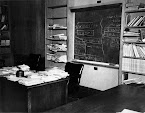The new quench protection system (QPS) has the crucial roles of providing an early warning for any part of the superconducting coils and busbars that develop high resistance, as well as triggering the switch-off of the machine. Over 2000 new detectors will be installed around the LHC to make sure every busbar segment between magnets is monitored and protected.
One of the major consolidation activities for the LHC is the addition of two new detectors to the quench protection system. A magnet quench occurs when part of the superconducting cable becomes normally-conducting. When the protection system detects an increased resistance the huge amount of energy stored in the magnet chains is safely extracted and ‘dumped’ into specially designed resistors. In the case of the main dipole chain, the stored energy in a single LHC sector is roughly the same as the kinetic energy of a passenger jet at cruising speed.
The first new detector is designed to monitor the superconducting busbars, including the joints between segments – the part that caused the incident in Sector 3-4 last September. The new system can measure the busbar resistance to about 1 nano-ohm (one billionth of an ohm) and will provide an early warning for any joint that develops high resistance.
"With this detector in place, we would have caught the ‘bad joint’ in Sector 3-4 two days earlier – safely in time to prevent any damage", explains Knud Dahlerup-Petersen from the Quench Protection team. In total, 2132 of these detectors will be installed around the machine, so that every busbar segment between the magnets will be monitored.
The second new detector protects against ‘symmetric quenches’. It was originally planned to add this second phase of the protection system during the first winter shutdown period. In February this year, however, it was decided that the system should be in place before the LHC restart. "So it has been a real effort to catch up, but our group (TE/MPE) had a lot of help from other groups, mainly TE/EPC and other departments, in particular PH and EN, and we’re now fairly confident that the whole system will be ready in time", says Petersen.
Symmetric quenches were only discovered in June last year during the campaign of training quenches in sector 5-6. When a magnet quenches, a symmetric quench can occasionally occur in the neighbouring magnets. It is caused by the heat transfer between the magnets, but it is particularly difficult to detect as the quench develops identically in both parts of the magnet coils which are used for the quench signal. The existing detection system compares the voltage signals from the two coils to detect a resistive build-up in either one. However if the quench develops in both at the same time, the two voltage signals remain the same, and the quench goes unnoticed.
The new protection system monitors the voltage across 4 adjacent dipoles (or 2 adjacent quadrupoles), allowing a symmetric quench to be detected and also provides a back-up detection method for ‘normal’ (asymmetric) quenches. However, the 4-magnet measuring system is based on digital quench detector technology, as opposed to analogue electronics used in the present QPS system. "It is notoriously difficult to find digital electronics that will not degrade in the high-radiation environment, so we had to choose the components carefully." Says Petersen. "We have now fully radiation-tested the first prototype, and we are basically ready to start mass production of the so-called SymQ detector board."
The thousands of new detector boards will be housed in 436 crates around the LHC. As the complex design lead to a relatively long R&D period there’s now not enough time to tender production out to an external company. Therefore, a production line for assembling of the complete protection units has been set up in a CERN workshop.
Another important measure taken is the consolidation of the network of Uninterruptable Power Supplies (UPS), designed and operated by EN/EL. The UPS provide power to all the essential parts of the machine, including the quench protection system, even if there is a problem with the mains grid. However, the UPS was not completely fail-safe as certain parts were not fully redundant. During the energy extraction, which takes up to 6 minutes in the dipole circuits, the magnet system remained unprotected in the event of a UPS failure. New cables have been laid and modifications applied to the UPS to make sure that the part of the UPS which powers the QPS systems is completely backed-up.
The latest from the LHC
New test diagnostics are being developed to measure the electrical resistance of the copper component of the superconducting busbars, specifically within the interconnections that join the busbars together (see previous update) The first test is very precise but requires local access to the interconnection, which therefore needs to be open. A second test has been developed that can be performed externally using voltage tap connections. This allows the resistance of a 30-40m segment to be measured without opening interconnections. The two methods have been checked to give consistent results and can be used to identify the interconnections with the highest resistances, which are subsequently repaired. In parallel simulations and laboratory tests are also being carried out. All dipole interconnections in the four sectors have been measured at room temperature. Work is ongoing to measure the quadrupole lines, which have much longer busbar segments. A further test is currently being developed to be performed at cryogenic, but non-superconducting temperatures, to allow the rest of the machine to be checked.
The installation work on the pressure release ports of the inner triplets magnets has now been completed.
* Πάτα εδώ για να δεις Οδηγίες για μετάφραση της ανάρτησης *






0 σχόλια:
Δημοσίευση σχολίου